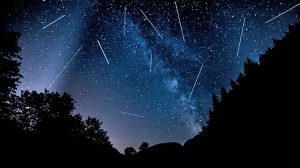Enhance Your Evenings with Landscaping Lighting
Newsletters | 08.03.23
In planning your landscaping, don’t forget what your yard will – or could – look like after the sun goes down. The right lighting can add an entirely new dimension to your landscaping that will increase both the functionality and visual appeal of your outdoor spaces.
Lighting can use your larger landscape features and your house itself to create dramatic shadows or silhouettes. Different effects can be created by up-lighting a shrub or tree (shining light from the ground up) or by down-lighting it (shining light down from overhead). The right illumination can also transform an otherwise neglected porch or patio into an inviting living space for warm summer nights.
Even a simple lighting system can create an impressive visual effect while also providing safety, security, and increased usability of your property.
Well-placed landscape lights also provide enhanced safety and security. Exterior landscape lighting makes your great outdoors safer for your guests and more secure from unwanted visitors. It can light paths to help guests reach your door safely and eliminate shadows where an intruder might hide.
With exterior lighting, enough is plenty, so it’s important not to overdo.
Blue Tree Landscaping can design a lighting plan to use various types of lights – wash lights, bullets, path or spread lights, or well lights – where each will effectively contribute to an overall pleasing scheme without creating an overly lighted effect. Installation is not disruptive to existing landscapes, and most light fixtures can be tucked out of plain view.
FUN FACTS
Summer Meteor Shower
The Perseid meteor shower (also known as the Perseids) greets stargazers every year from mid-July to late August. This year, the shower will peak around Aug. 13, 2023, according to skywatching site In The Sky. 2023 will be a good year for the Perseids as the moon will only be 10% illuminated.
The Perseids are caused by Earth passing through debris — bits of ice and rock — left behind by Comet Swift-Tuttle which last passed close to Earth in 1992. The Perseids peak when Earth passes through the densest and dustiest area on Aug. 11-12. Years without moonlight see higher rates of meteors per hour, and in outburst years (such as in 2016), the rate can be between 150-200 meteors an hour.



